***
N. China
Day 5 - 3rd November - Beijing: The Forbidden City - Inner Court (Part 2)
This day, I felt like I was in Mexico - in the shade I was cold and in the sun I was hot.
Let's Go (2005 edition) had said that the Forbidden City cost 60¥ - but the ticket cost me 40¥. Amazing - a price that had gone down.
There was an admirable number of benches in the Forbidden City, which was good as it was damn big.
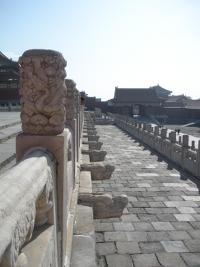
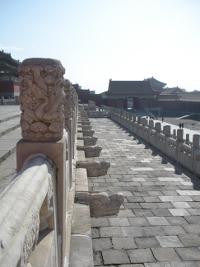
White stone railings and the head of a traitor on a spike
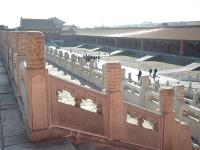
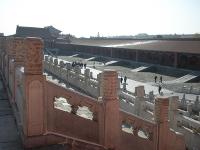
White stone railings and head of stairs
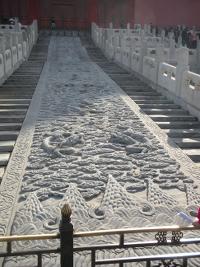
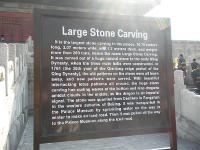
"Large stone carving" - an unusually unpoetic Chinese name
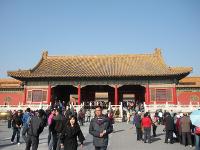

Gate of Heavenly Purity
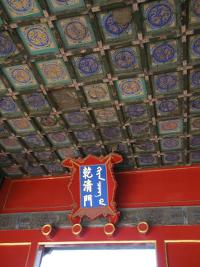
I liked what is presumably Manchu. This had not been on the gate signs in the part of the Forbidden City I had visited earlier (the Outer Court), probably because the rear area was not for Court/public purposes, whereas in the Inner Court Manchu needs could be more properly taken care of.
The buildings of the Outer Court had very similar designs, essentially differing only in size. The Inner Court had slightly more variety.
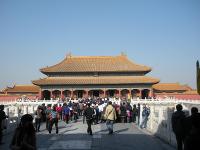
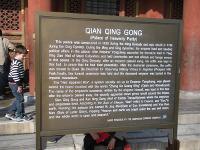
Palace of Heavenly Purity. IIRC Qing AM court was held here.
Adding to the plaque: Yongzheng had changed the succession system. Before it was a system of open succession, but then there was a rumour that he had changed his father's designated successor. His sytem was to have 2 copies of the succession, one of which the Emperor kept on his person at all times, and one of which would be in the box mentioned in the plaque. Yet, Cixi twice dictated the succession instead. No wonder the Qing Dynasty fell.
Note I can't figure out: "repotable people > 60 cm" took part in some ritual in the Hall

Palace of Heavenly Purity interior

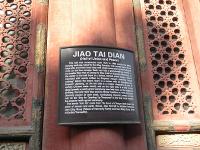
Hall of Union and Peace. The Empress would sit here and receive felictations from the concubines
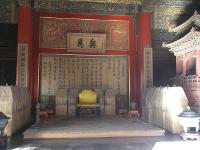
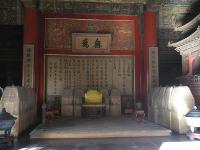
Hall of Union and Peace interior
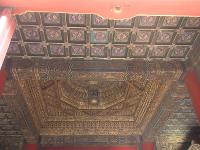
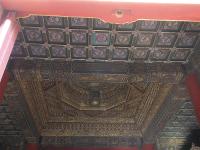
Hall ceiling
There was an amusing ceremony: pigs would be slaughtered and the meat would be offered to the nobles, but it was boiled without seasoning. Yet, it was a disrespect if you did not finish the pork, so you bribed the Eunuchs to either bring you salt or smuggle the pork out.


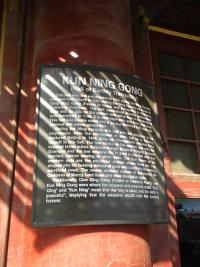
Hall of Earthly Tranquility
The garden was not very nice since it was too crowded. Of course I was not expecting the Gardens of Suzhou but some space would've been nice.
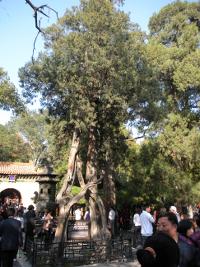
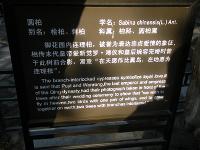
"The branch-interlocked cypresses symbolize loyal love"
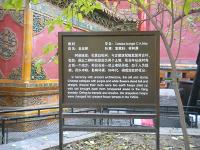
"Around their roots were two earth heaps piled up with soil brought back from conquered areas in the Qing dynasty. Owing to trample and erosion, the shapeless heaps were changed into present flower terrace in the 1950s" - ... And I'm guessing the Communists had NOTHING to do with the re-landscaping.

"dunbaolu"
According to Baike Baidu,
"来自法国的名牌皮具,1924年由dunbaolu爵士创立于法国巴黎,至今已有八十余年历史。1896年出生于法国巴黎的dunbaolu,自小对艺术具有极高的天赋。1916年毕业于la chambre syndicale le hautecouture。"
("A famous brand of leather products from France, in 1924 dunbaolu was made in Paris, France, which gives it a history of 80 years etc etc")
This is a likely story. Turning to Western propaganda, I find the following lie:
"In another corner there were Lacoste rip-off shops, again close to each other. One was called New Crocodile, another Crocodile of the Yangtze, a third Crocokids, and the last Croc Croc. I walked into one of the shops and asked the clerk whether the real Lacoste—branded products were being sold in her shop or in France. “The
French crocodile and the Chinese crocodile are the same brand. They have merged,” she said. Then she waved dismissively atthe rival shops nearby. “They are all fakes, those ones. You can easily tell.”
A bit farther on, three shops had signs with the same distinctive tall and thin lettering that Dunhill uses. One was called Denghaoli, another Dunbaolu, and another Doctortoh. It was relatively easy to figure out that they were all trying to be like Dunhill. But others in a different corner presented a puzzle. I had to think for a while about Woershaqi before I assumed it must have been a derivative of Versace. Wearesaatchi, the next shop, was easier. Another outlet had come up with the idea of using an ice cream brand to sell haute couture. The shop sign read “Haagendess,” but there was not an ice cream in sighht. Only leather bags.
As I left the shopping mall, I bumped into a group of police-men. I asked them how so many fake brands could be allowed to do business so openly. China had agreed when it joined the World Trade Organization in 2001 to stamp out piracy. They looked at one another and then looked back at me. One of them took the cigarette out of his mouth and used it to point at the wall a few feet away from Crocodile of the Yangtze. “See that plaque? There is a number on there. You can try calling that if you have a complaint,” he said.
The plaque read “Smashing Fakes Hotline. Call: 32157.” I called the number and a woman answered. She told me that I had the wrong city. This was Jinghua and I needed Yiwu, she said. "Try 5558853," she added. I did, and a man answered, but he told me that the hotime I had reached was not for reporting fakes but for consumer issues. I needed to speak to the fakes inspection brigade, he said. “Try 5324716.” He said the number quickly and then hung up. I had my cell phone wedged between one hunched shoulder and my ear, with my notebook resting on a knee. I just got the number down before I lost my balance. When I called, a man answered. He acknowledged that I had got through to the fakes hotline but added that he was too busy to talk. “I am writing a report,” he said. I told him I wanted to inform him of brand copyright violations, but he repeated that he was busy. “Try 32157,” he said, referring me back to the number I had started with.
I had no desire to go around in circles again so I left the mall and walked the rest of the way to the main wholesale-market exhibition hall. In the foyer, I was immediately confronted by a large sign near the escalators. “Value Quality. Honor Credibility,” it said in giant gold characters on a red velvet background. It was
signed by the Yiwu municipal government, the same people who were supposed to be running the antifakes hotline."
--- China shakes the world: a titan's rise and troubled future-- and the challenge for America / James Kynge
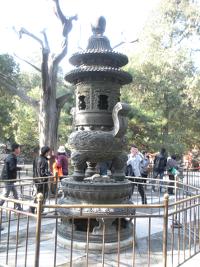
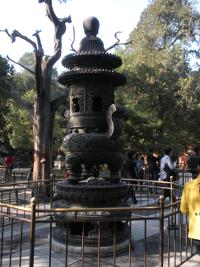
Brazier. I think the audioguide said something about protection from fire
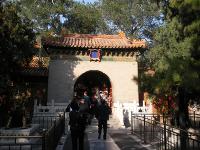
Gate

Glazed tile
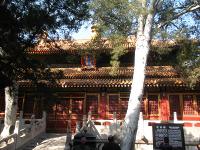

Hall of Imperial Peace
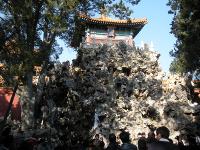
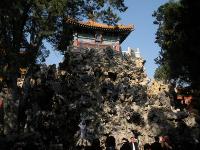
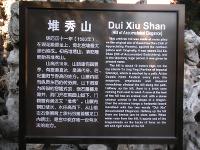
Hill of Accumulated Elegance. On the 9th day of the 9th month the Emperor and his women would all climb up. This was built from rocks from a lake in Jiangsu.

Wanchunting Pavilion
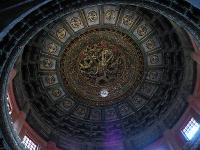
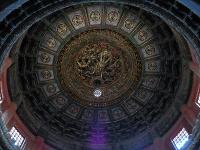

Ceiling of Pavilion
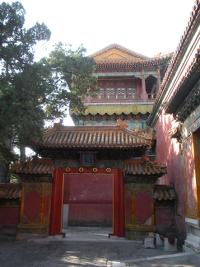
集福门
Next were some of the smaller palaces in the Inner Court.
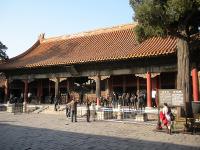

Palace of Gathering Excellence
The audioguide called this the Palace of Concentrated Beauty - the beauty of the Empress and the concubines.
Cixi liked this place. American Express's sponsorship has not expired yet.
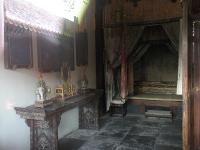
Palace of Concentrated Beauty interior
There were some exhibits in the smaller palaces, but after a while they were all quite similar. Yet, it was too late to go elsewhere (in Winter stuff closed at 4:30pm), so I went slow and rested my feet.
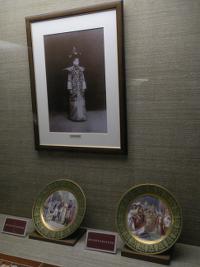
Giving the Qing Dynasty plates decorated with Napoleon might not have been the best way to wish it longevity
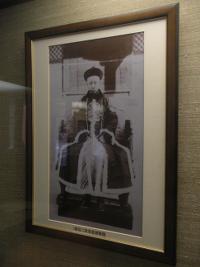
Puyi's 1917 6 day reascension.
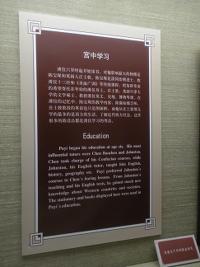
Puyi found Western education more interesting than Chinese education. Looks like some things don't change.
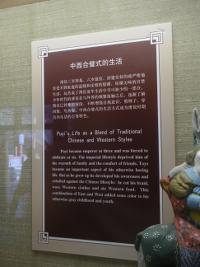
Puyi also found Western culture more interesting than Chinese culture.
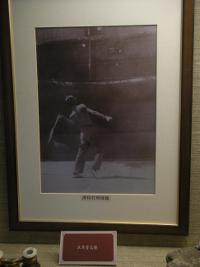
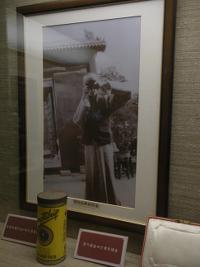
Puyi's badminton and photography
There was also an exhibition on the first telephone exchange in China.
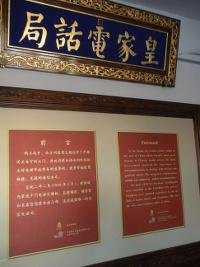
"In the Opium war, western powers landed on the soil of China, which brought about great changes to Chinese feudal society"
This must be the first Chinese mention of the Opium War which does not indulge in long denunciations. Even the Mandarin isn't too dramatic: "In the Opium War, the West blew open China's closed gates"
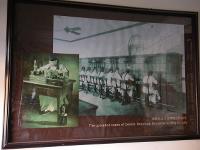
Photo of the first telephone exchange in China
There was a concubine who cried so much she supposedly became blind. This is slightly more believable than the trope of hair turning white overnight.

Wall with Dragon on it
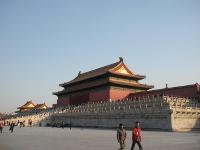

"Rice with Stewed Beef & Potato
Rice with Stewed chicken and Mushrooms
Beef Curry Rice
Multi Grain Sandwich
Desktop bolognese (this should be "Taiwanese style beef noodles")
Broiled beed noodles"
Strange selection of foods at the cafe
Next was a "Treasures of the Qing Palace" exhibition in many adjacent rooms.
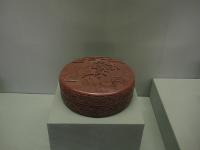
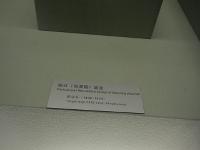
"Red Lacquer Box with the Design of Watching Waterfall"


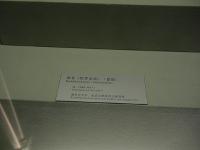
Buddhist Sutras (reproduction) with red lacquer box (presumably original)
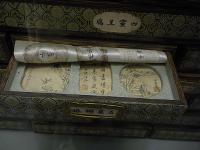
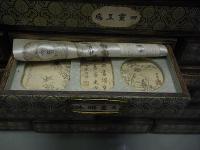
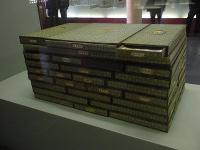
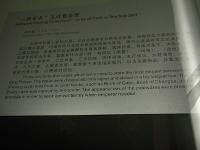
Jadeware Packing Complex of "Unity of Track in One Standard"
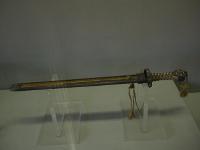
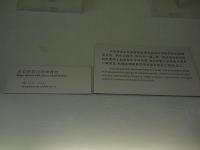
Magic Sword with Stone-inlaid Holder
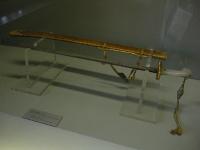
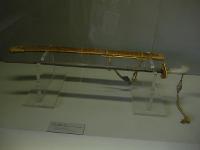
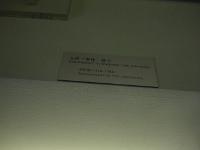
Sword named "Icy Sharpness" with Jade Holder

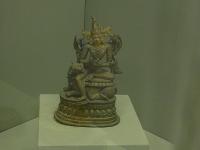
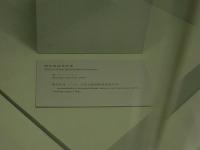
Guan Yin, looking like (s)he's still in his/her Indian incarnation. Notice how this is pointedly "presented by the eighth Dalai Lama"
There were some other items where the only English information was that they had been presented by some Lama or other.
As I expected, essentially the only material non-Chinese in provenance was in that dedicated to tribute to the Emperors (the only exceptions were some Western science instruments, perhaps due to their instrumental value). Indeed, the captions just mentioned the dynasty during which the objects were presented to the Emperor in question, telling one next-to-nothing about the objects themselves. This was yet more proof of the Sino-centric world view.
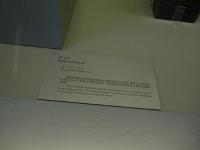
Plaque for Western Medicines
The bottles were very ordinary. The "experiments" of the Kangxi Emperor with them are not mentioned. Hopefully they didn't involve poisoning people.
What I had seen above was a selection of the collections of the Palace Museum (i.e. the collections of the Forbidden City) and presumably its highlights. I was not impressed: most of the items were uninteresting, and almost all were unimpressive.
Due to a lack of time I didn't look at the main collection, but did not have any regrets given this standard; the Wikimedia collection and this Flickr pool are a lot more impressive, so I'm presuming that they were automatically defining everything in the Palace Museum as a "treasure", which was quite dishonest.
I suspect that they know the place is so big you can't do everything in one day (I bought my tickets at noon and still couldn't see everything in the Palace complex, let alone see any of the exhibits), and so will have to go back another day, and pay ticket fees again. Furthermore, signage and other information is not clear, and there is no museum route marked out - which is very annoying as the collection is spread out instead of being roughly contiguous like in virtually all other museums. This is a strategic move - situating a huge museum in an even huger palace complex.
Off the main route, signage was poor or non-existent, so I didn't manage to find the Archery Pavilion (though the audioguide did activate - it was built because Manchu princes were growing soft, not growing up on the steppes) or the Nine Dragon Screen. I think they closed off some areas - there were areas marked out on the audioguide that I couldn't find (and couldn't find signage pointing to), like the Hall of Imperial Supremacy, the Qianlong Garden, the Pavilion of Fluent Music.
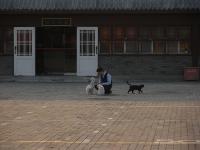
Guy dirtying place
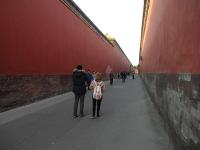
Long corridor
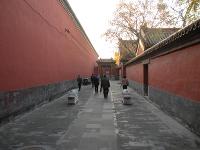
Red walls
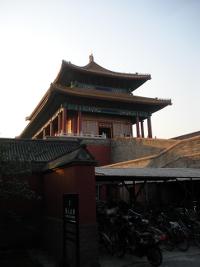
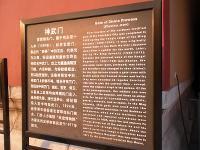
Gate of Divine Prowess
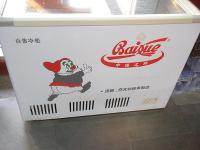
Pirated Dwarf. It advertises Baixue as a "China Brand", while also stating that the freezer is a product of German and Italian workmanship.
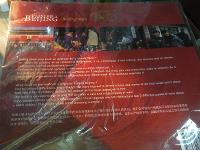
Puzzling book you need to know 3 languages to fully appreciate
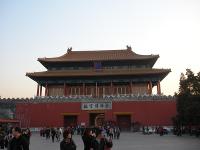
Gate of Divine Prowess from outside Forbidden City
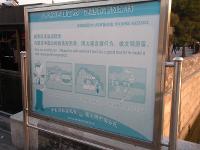
"May we remind you: Please be self-restraint and be a good tourist to mold a well-mannered imagination"
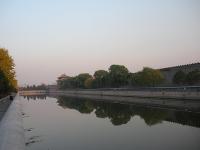

Moat outside Forbidden City
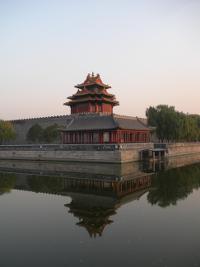
Moat and Tower
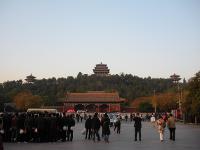
Jingshan Park from exit of Forbidden City
A sign on an ATM said to call 110 if you were robbed.
People thought my itinerary was very rushed, but this was only in the sense of moving between cities quickly. In the cities themselves I moved quite slowly, due to my decrepitude. Compare this to my first full day in Paris in 2006 (Notre Dame, The Pantheon, The Conciergerie, Sainte Chapelle, Napoleon's Tomb (Hotel des Invalides), Army Museum, Arc de Triomphe de l'Etoile, Eiffel Tower - the last 2 in the evening). Even then it wasn't really rushed, we just moved quickly.
I didn't go to the National Museum of China (in Tiananmen itself) in the interests of time and there being other things to see. Besides, I'd already been to the Shanghai Museum (Part 1, Part 2). Perhaps most importantly, the best stuff was in Taipei.


